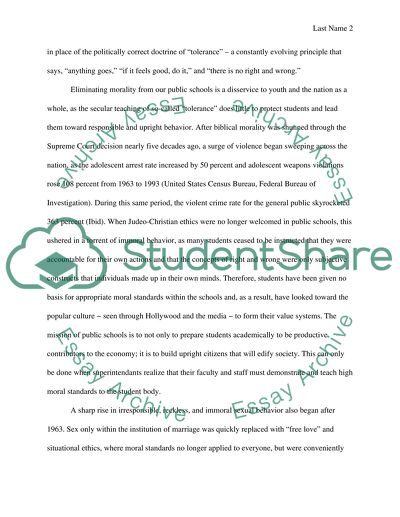Cite this document
(“Morality: Can Our Schools Afford to do without it Essay”, n.d.)
Retrieved de https://studentshare.org/sociology/1390561-final-paper
Retrieved de https://studentshare.org/sociology/1390561-final-paper
(Morality: Can Our Schools Afford to Do Without It Essay)
https://studentshare.org/sociology/1390561-final-paper.
https://studentshare.org/sociology/1390561-final-paper.
“Morality: Can Our Schools Afford to Do Without It Essay”, n.d. https://studentshare.org/sociology/1390561-final-paper.


